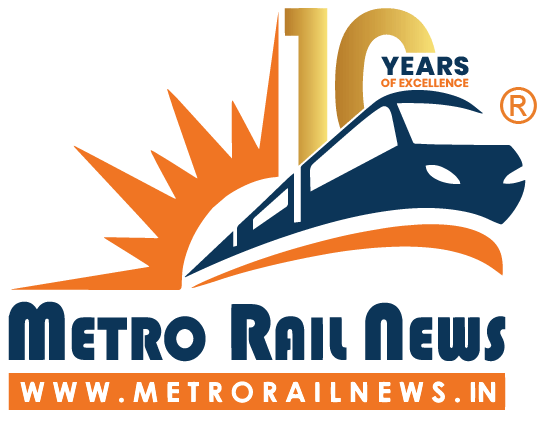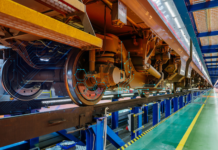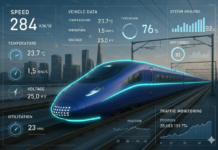Overview
Bengaluru Suburban Railway (also known as Bengaluru Commuter Railway) is a suburban rail network currently under construction in Bengaluru. The city’s Suburban Rail system was originally proposed in 1983. Several route plans have been recommended since then, but no Suburban Rail project could be materialised and took place. It was eventually approved and included in the 2019 Railway Budget. Nirmala Sitharaman, the finance minister, stated in her budget on 1 February 2020 that the project will cost Rs 18,600 crores to implement. The central government would provide twenty per cent of the equity and facilitate and promote external funding for up to sixty per cent of the project cost.
On completion, it is expected to be the first of its kind and unique in India, with metro-like facilities and rolling stock. However, the proposed transport system is said to have the slowest design speed among all suburban rail projects presently being developed in the country. Nagpur broad-gauge metro and the National Capital Region Transport Corporation are constructing train tracks with a design speed of 200 kilometres per hour with an operational speed of 160 kilometres per hour. Suburban rail, together with the Hyperloop, High-Speed Airport Train, Intercity trains, Metro rail, Metro Neo, and Metrolite, would provide rail-based public transportation to the people of Bengaluru.
Project Development
In Bengaluru, a suburban rail service existed as early as 1963 for HAL employees to commute from KSR Bengaluru to Vimanapura Railway station. A formal Suburban Rail system for Bengaluru was first proposed in 1983 by a team from Southern Railway led by then Railway Minister C. K. Jaffer Sharief and Bengaluru Member of Parliament. Their recommendation was to invest in three suburban rail lines as well as a 58-kilometre ring railway. The package was projected to cost Rs. 6,500 million over a 25-year period in 1983. In 1993, C. K. Jaffer Sharief was appointed Minister of Railways in India. He then Influenced the State of Karnataka to constitute and set up another committee to look into mass rapid transit prospects in the city.
This group advocated essentially the same circular railway proposed by Southern Railway in 1983. The plan was rejected by India’s then-Prime Minister in both 1983 and 1993. The Government of Karnataka commissioned RITES (Rail Indian Technical and Economic Services) in 2007 to conduct a CTTP (Comprehensive Traffic and Transportation Plan) for the city of Bengaluru. Their report proposed ten Suburban Rail routes totaling 204.0 km. According to the analysis, Suburban Rail (along existing rail lines) was envisaged to cost substantially lesser compared to traditional mass rapid transit undertakings for the city.
Praja Bengaluru made a proposal in a ‘Call To Action’ report in July 2010. This design and plan were supported and presented at the Indian Institute of Science (IISc) ‘s Centre for Infrastructure, Sustainable Transportation, and Urban Planning (CisTup). The concept was for a 376-kilometre network with 42 new stations centred on three hubs (Yesvantpur Junction, Benniganahalli, and Yelahanka Junction). One significant recommendation was to use the busy KSR Bengaluru station only as a pass-through station.
RITES completed a feasibility study, especially for suburban rail services in Bengaluru, in November 2011, and their final report was submitted to the Directorate of Urban Land Transport (DULT) in November 2012. The 179-page study examined each of the existing train routes totaling 440.8 km in and around the city, as well as the development of Suburban train services across three phases. On 5 July 2013, the state government approved the suburban rail system. The proposed system was approved by Chief Minister Siddaramaiah in the 2013-14 state budget, which was presented on 9 July 2013. The budget proposed and suggested the formation of the Bengaluru Suburban Rail Corporation Limited, a special purpose vehicle (SPV) to carry out the Rs. 87.59 billion project.
The then Union Railway Minister, Mr. Suresh Prabhu declared and announced partnering with the Karnataka government for a Rs. 9000-crore Suburban Rail network for Bengaluru in the 2016-17 Railway budget; however, no funds were allocated. The state government submitted a modified version of the original RITES plan on 3 February 2016, which seemed to be intended to kick-start the project with a Rs. 1,000-crore investment connecting Mandya with Kengeri, Whitefield with Baiyappanahalli, and Tumakuru with Yeshwanthpura Junction. The state government provided 100 crore for this purpose. The state commissioned RITES to conduct another feasibility assessment on the project, and the latter’s survey determined that the project was feasible. However, Railways indicated that Phase Two of the project (which would connect Tumakuru and Yeshwanthpura Junction) was not possible.
RITES submitted a revised plan for a 161 km network in November 2018, which was modified and amended again in August 2019 to lower the cost and expenses. Twenty-nine of the 82 stations were eliminated, the route length was decreased to 148 kilometres, and the costs were reduced to Rs. 16,000 crores. The Government of India finally agreed to this and accepted the proposal.
Slow Pace
Though the project had been approved in principle by the Government of India, financial allocations and other progress had been slow for many years. The project was approved by the Prime Minister’s Office and the Cabinet Committee on Economic Affairs (chaired by the Prime Minister) on 7 October 2020. The State Government commenced budgetary support for the Suburban Rail project, with 500 crores sanctioned in the 2020-21 budget. Meanwhile, K-RIDE has begun the Suburban project by soliciting bids for land survey, hiring staffs and personnel, and other formalities. With the major thrust and momentum provided to the project, two priority lines had been proposed to be taken up first as per the Government of Karnataka’s advice. These are the Mallige Line and the Kanaka Line. The routes of the suburban rail system are named after local flowers. Prime Minister Narendra Modi laid the groundwork for the start of the project’s construction on 20 June 2022.
Project Specification & Key Features
Bengaluru Suburban Rail Project (BSRP) is a 149.348 km commuter rail network in Bangalore, Karnataka, featuring sixty-four stations. RITES prepared the feasibility report and final detailed report of the project proposing four lines/corridors. The central Government approved the project to begin construction in October 2020 at a cost of Rs. 15,767 crore. However, the foundation stone for the project’s construction work to commence was laid by Prime Minister Narendra Modi in June last year. Rail Infrastructure Development Company (Karnataka) Limited (K-RIDE) is implementing the project, which has a scheduled completion date of 2026.
- Operational: 0 km
- Under Construction: 0 km
- Approved: 149.348 km
- Elevated Routes: 45.392 km
- At-Grade Routes: 103.856 km
- Maximum Speed: 90 kmph
- Operational Speed: 35 kmph
- Track Gauge: Broad Gauge
Route Information
Corridor 1: Sampige Line
- Route: KSR Bengaluru – Yelahanka – Devanahalli
- Length: 41.478 km
- Type: Elevated (19.22 km) & At-Grade (22.278 km)
- Depot: Akkupet Depot
- Number of Stations: Fifteen (8 elevated & 7 at-grade)
- Station Names: KSR Bengaluru City (interchange), Srirampura (future), Malleswaram, Yesvantpur (interchange), Muthyal Nagar, Lottegollahalli (interchange), Kodigehalli, Judicial Layout, Yelahanka, Nitte Meenakshi, Bettahalasoor, Doddajala, Airport Trumpet, Airport Terminal, Airport KIADB, Devanahalli
- Note: A suburban rail link is proposed to Bengaluru International Airport
Corridor 2: Mallige Line
- Route: Baiyyappanahalli Terminal – Chikkabanavara
- Length: 24.866 km
- Type: Elevated (7.723 km) & At-Grade (17.143 km)
- Depot: Jalahalli Depot
- Number of Stations: Fourteen (6 elevated & 8 at-grade)
- Station Names: Chikka Banavara, Myadarahalli, Shettyhalli, Jalahalli (future), Yesvantpur (interchange), Lottegollahalli (interchange), Hebbal, Kanaka Nagar, Nagawara, Kaveri Nagar (future), Banaswadi, Seva Nagar, Kasturi Nagar, Baiyapanahalli (interchange)
Corridor 3: Parijaata Line
- Route: Kengeri – Whitefield
- Length: 35.52 km
- Type: Elevated (10.40 km) & At-Grade (25.12 km)
- Number of Stations: Fourteen (4 elevated & 10 at-grade)
- Station Names: Kengeri, RV College (future), Jnanabharati, Nayandahalli, Krishnadevaraya, Jagjeevanram Nagar, KSR Bengaluru City (interchange), Kumara Park, Bengaluru Cantt, Bengaluru East, Baiyapannahalli, Krishnarajapura, Hoodi, Whitefield
Corridor 4: Kanaka Line
- Route: Heelalige – Rajankute
- Length: 46.285 km
- Type: Elevated (8.049 km) & At-Grade (39.716 km)
- Depot: Silkboard Depot
- Number of Stations: Twenty-One (2 elevated & 19 at-grade)
- Station Names: Rajakunte, Muddana Halli, Yelahanka (interchange), Jakkur, Hegde Nagar, Thanisandra, Hennur, Horamavu, Channasandra, Benniganahalli (interchange), Kagadaspura, Doddanekundi, Marathahalli, Belandur Road, Carmelaram, Ambedkar Nagar, Hsukur, Singena Agrahara (future), Bommasandra (future), Heelalige
Depots
Two depots have been planned for being constructed. Jnanabharathi depot would extend over 56.9 acres, whereas Devanahalli depot shall cover around 61.2 acres. These, however, do not fall on priority routes 2 and 4. As a result, the viability of a depot at Huskuru along the Kanaka Line, in addition to other options, is being investigated.
Features
DPR for the project features a number of unique and one-of-a-kind characteristics in the proposed system. Many stations have been planned to serve as commercial hubs. Many other stations shall be developed as Intermodal Integration Hubs, allowing users to easily switch to other means of transportation such as Metro. Automated fare collection systems and platform screen doors shall be installed at stations. DPR recommends Metro Train Sets (EMU) – RS 13 series, which are used in Delhi Metro and manufactured by M/s BEML. The DPR also suggests Bengaluru to be most suitable for the Commuter Rail system.
Last Mile Connectivity
The Bengaluru Comprehensive Mobility Plan lays forth a road map for an integrated public transport experience. As in European cities, Bengaluru Suburban Rail stations will be connected with other forms of transportation, allowing seamless movement across different modes of transportation. Public Bus Service, Metro trains, Inter-city buses, Inter-city trains, Metrolite, Metro Neo, Hyperloop, BRTS, Peripheral Ring Road, Bus priority corridors, Airport metro, Airport Bus service, and High-speed Airport Train all have been planned to be incorporated into the suburban train network.
To provide last-mile connectivity to suburban rail stations, the Public Bicycle Sharing (PBS) and Shared Micro-Mobility System programmes have been developed. All 57 K-RIDE stations will be transformed into integrated commercial centres (smart station hubs) where people may work, park, shop, eat, and trade. Suburban train stations will be accessible from all directions. The suburban train station plan will not only focus on the development of a modern station but also on traffic circulation and road improvement, easy transition to other modes of public transportation, widening of approach roads and ramp-based multi-level access, similar to the New Delhi Railway station redevelopment model.
Latest Update
The Bengaluru Suburban Rail Project (BSRP) is being implemented in stages. On-the-ground work has already begun in several areas. The Rail Infrastructure Development Company (Karnataka) Limited (KRIDE), which is in charge of the project, recently revealed that it had received bids from three different companies to supply coaches for the venture. A total of three companies expressed their interest in responding to Request for Qualification bid and proposal to supply coaches/rolling stock for the Bengaluru Suburban Rail Project (BSRP), the organisation stated in a statement. Construcciones y Auxiliar de Escales (CAF), Bharat Heavy Electricals Limited (BHEL), and Bharat Earth Movers Limited (BEML) are the companies. This is the first stage of the two-phase tender process, in which bidders must submit an expression of interest by meeting the technical and financial qualifying criteria. Shortlisted bidders from the first list shall be eligible to participate in the second round for their proposal towards the financial bid.
On the basis of the proposal submitted in the financial bids, the lowest bidder shall be awarded the contract for supplying and maintenance of the BSRP trains as well as make available trained personnel and staff, according to the KRIDE. Earlier, the Indian Air Force (IAF) signed an MoU (Memorandum of Understanding) with KRIDE to hand over its territory at Jalahalli to BSRP. The forest department also gave its permission for the removal of nearly six hundred trees along the project’s path. The Bengaluru Suburban Rail Project, popularly known as the Bengaluru Commuter Rail Project, has been planned to include four corridors and routes.
The BSRP project is aimed towards developing a rapid rail network that connects the centre of the town to its outskirts and satellite communities. The network will also be extended to rural areas nearby. Ashwini Vaishnaw, Union Minister of Railways, described it as a ‘world-class suburban system on the lines of Mumbai suburban rail for Bengaluru with modern coaches at a lower cost.’ The BSRP will span 149.348 kilometres across four routes and shall include fifty-seven stations. The overall cost has been expected to be Rs 15,767 crore. The commuter rail will run in six directions: Devanahalli (Kolar), Kengeri (Mysuru), Rajanukunte (Doddaballapura), Chikkabanavara (Tumakuru), Whitefield (Bangarapet), and Heelalige.
- Corridor-1 (Sampige Line): KSR Bengaluru City (Majestic) to Devanahalli, with fifteen stations covering 41.40 kilometres.
- Corridor-2 (Mallige Line): Baiyappanahalli Terminal to Chikkabanavara, covering 14 stations and running across 25 kilometres. The stations in this stretch include Byappanahalli, Kasturinagar, Sevanagar, Banaswadi, Nagawara, Kanakanagar, Hebbal, Lottegollahalli, Yeshwantpur, Jalahalli, Shettihalli, Myadarahalli, and Chikkabanavara.
- Corridor-3 (Parijata Line): Kengeri to Whitefield covering 35.52 kilometres with nineteen stations.
- Corridor-4 (Kanaka Line): Heelalige to Rajankute with nineteen stations along the 46.24-km-long rail route. This stretch will have 19 stations: Rajanakunte, Muddenahalli, Yelahanka, Jakkur, Hegde Nagar, Thannisandra, Hennur, Horamavu, Channasandra, Bennigenahalli, Kaggadaspura, Marathahalli, Bellandur Road, Carmelaram, Ambedkar Nagar, Huskur, Singara Agrahara, Bommasandra and Heelalige.
The BSRP is estimated to assist around ten lakh commuters by helping to remove congestion from city roads significantly. In June last year, Prime Minister Narendra Modi laid the foundation stone of the project.






